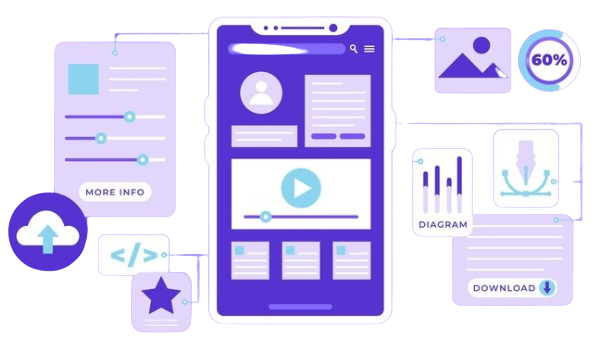Creating an intuitive Mobile App User Experience is crucial for the success of any mobile application. By focusing on simplicity, consistency, feedback, accessibility, and effective navigation, you can design interfaces that users find easy and enjoyable to use.
In the fast-paced world of mobile applications, the key to an app’s success often lies in the quality of its user experience (UX) design. A well-designed Mobile App User Experience can distinguish between an app that users love and one they quickly abandon. This blog post explores the importance of Mobile App User Experience design and provides insights into creating intuitive interfaces that keep users engaged and satisfied.
Understanding Mobile App User Experience
Mobile App User Experience refers to how users interact with and perceive a mobile application. It encompasses everything from the app’s visual design and navigation to its usability and overall functionality. A positive Mobile App User Experience ensures that users can easily achieve their goals within the app, leading to higher user satisfaction and retention rates.

The Importance of Intuitive Interfaces
An intuitive interface is a cornerstone of a great Mobile App User Experience. Intuitive interfaces are designed to be user-friendly and easy to navigate, allowing users to interact with the app effortlessly. When an app’s interface is intuitive, users can quickly understand how to use it without needing extensive instructions or a steep learning curve.
Key Elements of Intuitive Interfaces
- Simplicity: Keep the interface clean and uncluttered. Use minimalistic design principles to avoid overwhelming users with too much information or too many options at once.
- Consistency: Maintain consistency in design elements such as buttons, icons, and navigation patterns throughout the app. Consistency helps users predict how different parts of the app will behave, making it easier to use.
- Feedback: Provide immediate feedback to user actions. Whether it’s a visual cue, a sound, or a vibration, feedback lets users know that their actions have been recognized and helps them understand the results of those actions.
- Accessibility: Design the app to be accessible to all users, including those with disabilities. This includes considerations for color contrast, font size, and alternative text for images.
- Navigation: Ensure that navigation is straightforward and intuitive. Use familiar navigation patterns and clearly label buttons and menus to guide users through the app.
Best Practices for Enhancing Mobile App User Experience
- User-Centered Design
A user-centered design approach focuses on understanding the needs, preferences, and behaviors of your target audience. Conduct user research, surveys, and usability testing to gather insights and create personas that represent your users. This information can guide the design process and help you create an app that meets users’ needs.
- Prototyping and Testing
Before finalizing the design, create prototypes and conduct usability testing. Prototyping allows you to experiment with different design concepts and test their effectiveness with real users. Usability testing provides valuable feedback on how users interact with the app, highlighting areas for improvement.
- Prioritize Essential Features
Identify the core features that users need and prioritize them in the design. Avoid feature bloat by focusing on delivering a seamless experience for the most critical tasks. This ensures that users can achieve their goals efficiently without unnecessary distractions.
- Optimize for Different Devices
Mobile devices come in various screen sizes and resolutions. Design the app to be responsive and adaptive to different devices, ensuring a consistent User Experience across smartphones, tablets, and other devices. Use scalable vector graphics (SVG) and flexible layouts to accommodate different screen sizes.
- Performance Optimization
A smooth and responsive app is essential for a positive Mobile App User Experience. Optimize the app’s performance by minimizing load times, reducing battery consumption, and ensuring smooth transitions and animations. Regularly update the app to fix bugs and improve performance.
Conclusion
Creating an intuitive Mobile App User Experience is crucial for the success of any mobile application. By focusing on simplicity, consistency, feedback, accessibility, and effective navigation, you can design interfaces that users find easy and enjoyable to use. Implementing user-centered design principles, prototyping, and prioritizing essential features further enhances the user experience.
Tanbits offers mobile app development services, helping businesses create intuitive and engaging mobile applications.
A well-designed App User Experience ultimately leads to higher user satisfaction, increased retention rates, and a competitive edge in the crowded app market. By continually refining and optimizing your app’s UX design, you can create a product that users love and rely on.
BACK










